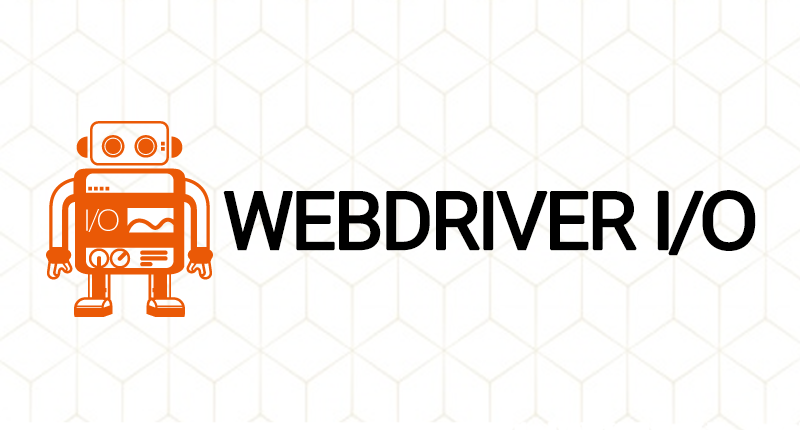Exploring Automated Testing with WebdriverIO: Usage, Advantages, and Limitations
 Md. Niaz Morshed
Md. Niaz Morshed
Automated testing has become an integral part of the software development as well as testing process, allowing developers and QA teams to ensure the quality and reliability of their applications. WebdriverIO, a popular JavaScript-based automation framework, simplifies the process of automating web applications. In this blog, we will delve into the usage, advantages, and limitations of WebdriverIO.
What is WebdriverIO?
WebdriverIO is a powerful and popular open-source automated testing framework that allows developers and testers to write automated tests for web applications using JavaScript. It's built on top of the Webdriver protocol, which provides a standardized way to automate web browsers. WebdriverIO supports various browsers, including Chrome, Firefox, Safari, and more, making it a versatile tool for web testing.
Usage of WebdriverIO
The significant part is, that WebdriverIO is capable of providing support for Web automation, Mobile automation (both Andriod and iOS) and API automation as well.
However, WebdriverIO is primarily designed for automating web and mobile applications, it's not the ideal tool for API automation. API automation typically involves making HTTP requests to test and validate the functionality of RESTful or SOAP APIs, whereas WebdriverIO is tailored for browser and mobile app automation.
Generally, WebdriverIO provides a straightforward approach to automating web applications. Here's a basic usage example:
const { remote } = require('webdriverio');
(async () => {
const browser = await remote({
capabilities: {
browserName: 'chrome'
}
});
await browser.url('https://just-an-example.com');
const title = await browser.getTitle();
console.log(`Title of the page: ${title}`);
await browser.deleteSession();
});
This piece of code initializes a WebdriverIO instance, opens a Chrome browser, navigates to a website, and retrieves the page title. WebdriverIO offers a wide range of commands and methods for interacting with web elements, handling user interactions, and performing assertions, making it highly versatile for test automation.
Advantages of WebdriverIO
Cross-browser Compatibility: WebdriverIO supports multiple browsers, enabling cross-browser testing, which is crucial for ensuring a consistent user experience across different platforms.
Simplified Syntax: WebdriverIO provides a simple and intuitive API, making it easier for both beginners and experienced QA engineers to write and maintain automation scripts.
Extensibility: WebdriverIO can be extended using plugins, allowing you to integrate it with various test frameworks, reporting tools, and cloud testing platforms.
Support for Parallel Testing: WebdriverIO enables parallel test execution, reducing test suite execution time and improving overall efficiency.
Integration with Selenium Grid: We can use WebdriverIO with Selenium Grid to run tests in a distributed environment, further improving scalability.
Support for Page Object Model (POM): WebdriverIO can be used with POM to enhance code reusability and maintainability by separating page elements and their interactions.
Community and Documentation: WebdriverIO has an active community and extensive documentation, making it easier to find solutions to common problems and learn how to use the framework effectively.
Limitations of WebdriverIO
JavaScript Dependency: WebdriverIO relies on JavaScript, which may not be the ideal choice for all testing scenarios, especially if your team prefers other programming languages.
Steep Learning Curve: While WebdriverIO offers a simplified syntax, getting started with test automation can be challenging for those new to the framework or test automation in general.
Limited Support for Mobile Testing: WebdriverIO primarily focuses on web application testing and has limited support for mobile application testing, which might require additional tools such as Appium.
Resource Intensive: Running a large number of tests in parallel may require substantial computing resources, which could be a limitation for some organizations.
In conclusion, WebdriverIO is a versatile and powerful automation testing framework that simplifies the process of automating web applications. Its support for multiple browsers, extensibility, and parallel testing capabilities make it an excellent choice for testing web applications. However, it's essential to consider its limitations, especially if your testing requirements extend to mobile applications or other programming languages. When used effectively, WebdriverIO can significantly enhance the efficiency and reliability of your web application testing efforts.
Here, I have provided a GitHub link of a basic and simple functional automation project with Page Object Model. I hope it will give you a primary idea about how to write automation code using WebdriverIO framework.
Subscribe to my newsletter
Read articles from Md. Niaz Morshed directly inside your inbox. Subscribe to the newsletter, and don't miss out.
Written by

Md. Niaz Morshed
Md. Niaz Morshed
Software QA professional with the enthusiasm to learn more and spread knowledge as well as skills among others